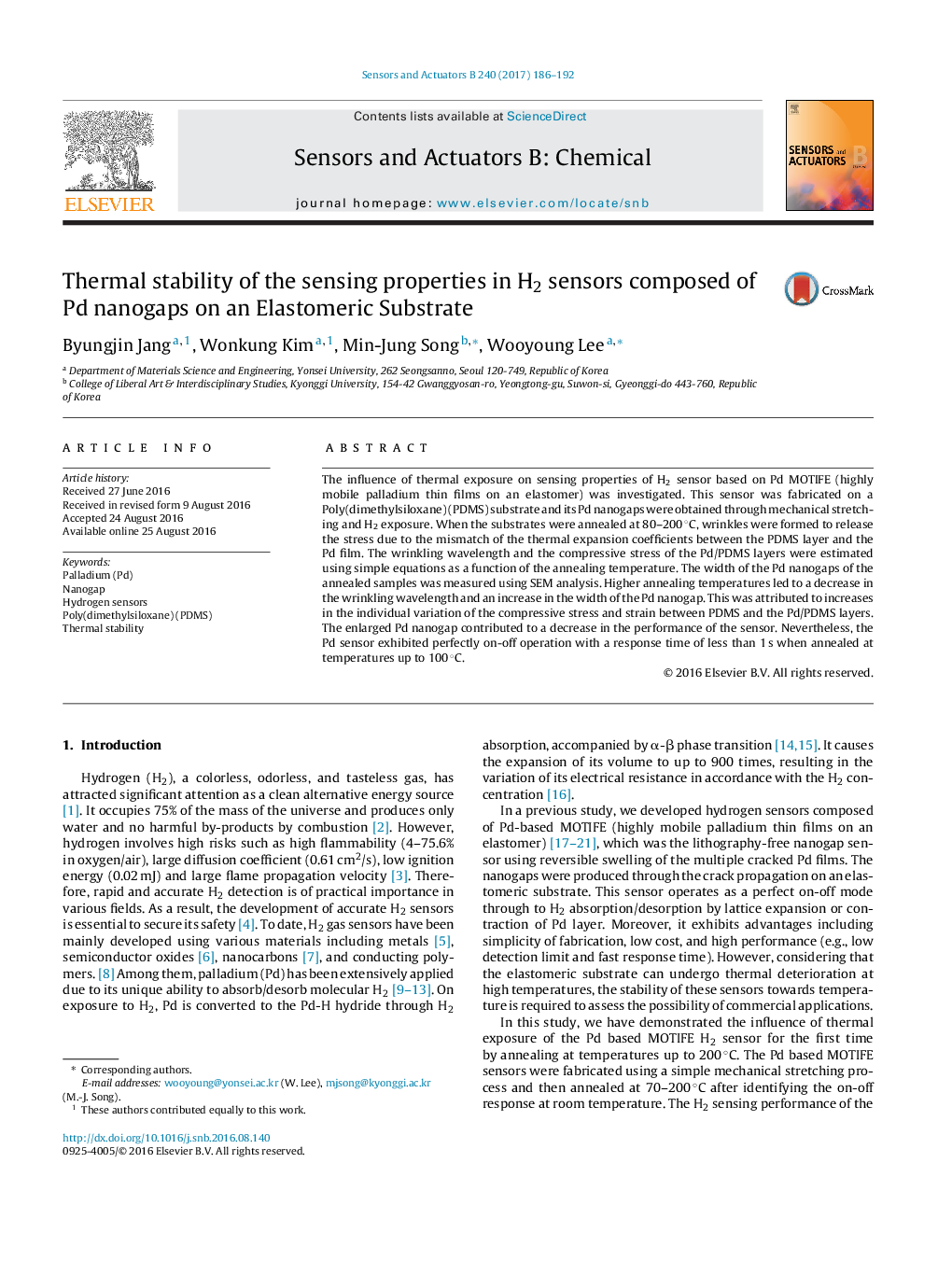| Article ID | Journal | Published Year | Pages | File Type |
|---|---|---|---|---|
| 5009566 | Sensors and Actuators B: Chemical | 2017 | 7 Pages |
â¢A H2 sensor that composed of Pd thin films on an elastomeric substrate was tested after annealed at 80-200 °C, respectively.â¢The wrinkling wavelength and compressive stress of the Pd/PDMS were estimated using simple equations.â¢Higher annealing temperatures led to a decrease in the wrinkling wavelength and an increase in the width of the Pd nanogap.â¢The enlarged Pd nanogap contributed to a decrease in the performance of the sensor.
The influence of thermal exposure on sensing properties of H2 sensor based on Pd MOTIFE (highly mobile palladium thin films on an elastomer) was investigated. This sensor was fabricated on a Poly(dimethylsiloxane) (PDMS) substrate and its Pd nanogaps were obtained through mechanical stretching and H2 exposure. When the substrates were annealed at 80-200 °C, wrinkles were formed to release the stress due to the mismatch of the thermal expansion coefficients between the PDMS layer and the Pd film. The wrinkling wavelength and the compressive stress of the Pd/PDMS layers were estimated using simple equations as a function of the annealing temperature. The width of the Pd nanogaps of the annealed samples was measured using SEM analysis. Higher annealing temperatures led to a decrease in the wrinkling wavelength and an increase in the width of the Pd nanogap. This was attributed to increases in the individual variation of the compressive stress and strain between PDMS and the Pd/PDMS layers. The enlarged Pd nanogap contributed to a decrease in the performance of the sensor. Nevertheless, the Pd sensor exhibited perfectly on-off operation with a response time of less than 1 s when annealed at temperatures up to 100 °C.
